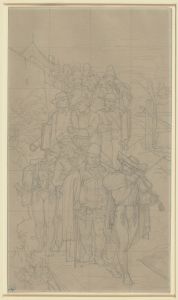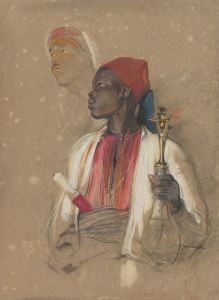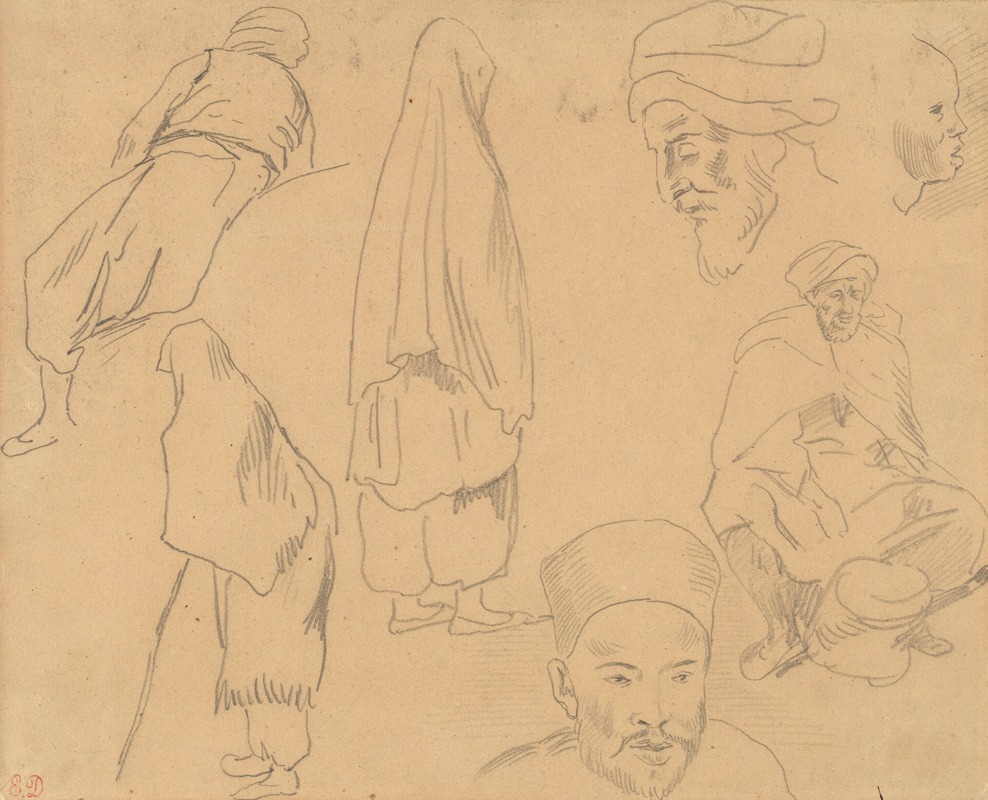
Four figure studies of Bedouins and three of head studies
A hand-painted replica of Eugène Delacroix’s masterpiece Four figure studies of Bedouins and three of head studies, meticulously crafted by professional artists to capture the true essence of the original. Each piece is created with museum-quality canvas and rare mineral pigments, carefully painted by experienced artists with delicate brushstrokes and rich, layered colors to perfectly recreate the texture of the original artwork. Unlike machine-printed reproductions, this hand-painted version brings the painting to life, infused with the artist’s emotions and skill in every stroke. Whether for personal collection or home decoration, it instantly elevates the artistic atmosphere of any space.
Eugène Delacroix, a leading figure of the French Romantic movement, is renowned for his expressive brushwork and vibrant use of color. His works often depict dramatic and exotic subjects, drawing inspiration from literature, history, and his travels. Among his numerous studies and sketches, "Four Figure Studies of Bedouins and Three Head Studies" stands out as an intriguing piece that reflects his fascination with North African culture.
Delacroix's interest in North Africa was sparked by his journey to Morocco in 1832, a trip that left a profound impact on his artistic vision. This expedition was part of a diplomatic mission, and it provided Delacroix with the opportunity to immerse himself in a world vastly different from his own. The vivid landscapes, the rich cultural tapestry, and the diverse people he encountered became recurring themes in his work.
"Four Figure Studies of Bedouins and Three Head Studies" is a testament to Delacroix's keen observational skills and his ability to capture the essence of his subjects with minimal lines and strokes. The piece is composed of several sketches, each focusing on different aspects of Bedouin life and appearance. The Bedouins, nomadic Arab tribes known for their distinctive lifestyle and attire, fascinated Delacroix, and he sought to portray their unique characteristics through his art.
In these studies, Delacroix employs a loose, fluid style, allowing him to convey movement and emotion effectively. The figures are depicted in various poses, showcasing the artist's interest in the human form and his ability to render it with dynamic energy. The head studies, on the other hand, offer a closer examination of individual features, highlighting Delacroix's attention to detail and his skill in capturing the subtleties of expression.
Delacroix's sketches are not merely preparatory works; they stand on their own as complete compositions that reveal his artistic process and his exploration of new themes. The spontaneity and immediacy of these studies provide insight into Delacroix's creative mind and his approach to capturing the world around him.
The influence of Delacroix's North African experience is evident in many of his later works, where he continued to draw upon the motifs and subjects he encountered during his travels. His fascination with the exotic and the unfamiliar contributed to the Romantic movement's broader interest in Orientalism, a trend that sought to depict the East as a place of mystery and allure.
"Four Figure Studies of Bedouins and Three Head Studies" exemplifies Delacroix's ability to blend observation with imagination, creating works that resonate with emotion and vitality. Through these studies, Delacroix not only documented the people and cultures he encountered but also expanded the boundaries of Western art, introducing new perspectives and themes that would influence generations of artists to come.





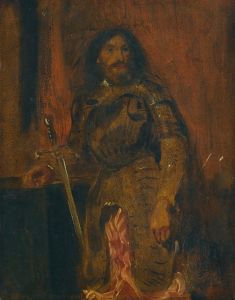

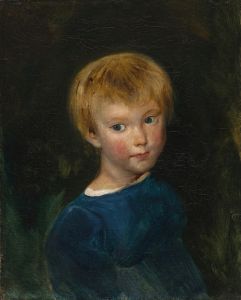
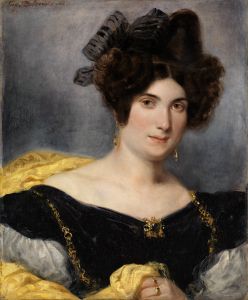
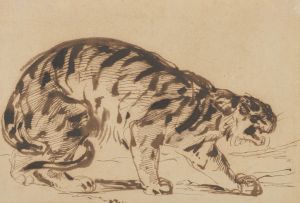
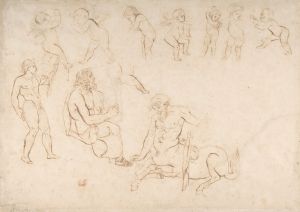
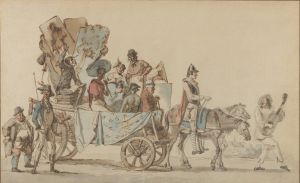
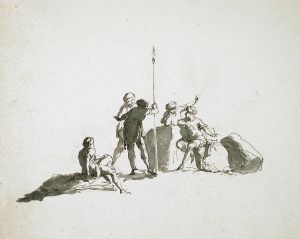
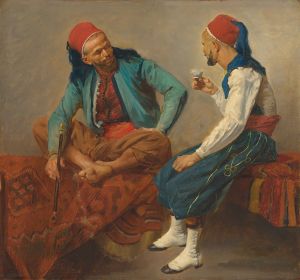
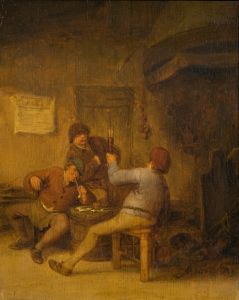
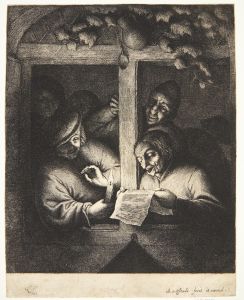
![Scenes from an Eastern Romance [Arabian Nights]](/imgs/258194/s/robert-smirke-scenes-from-an-eastern-romance-arabian-nights-26ad6fe2.jpg)
